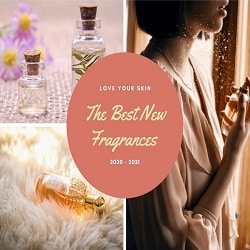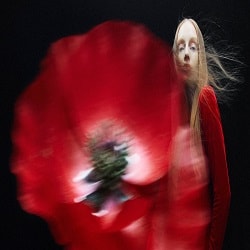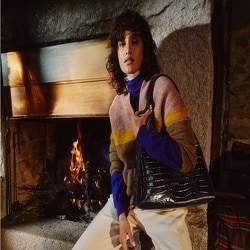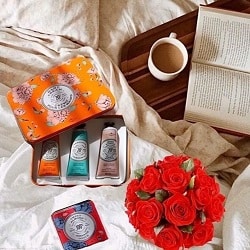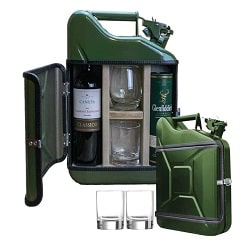While K-beauty may lead on product development innovation, Chinese consumers and their increasingly influencer-led shopping habits are driving trends in the beauty travel retail market. The rise of selfie culture contributes to a growing trend for live-stream shopping events in duty-free stores and airports hosted by KoLs or Wanghongs, as well as the normalisation of beauty filters.
As the selfie generation continues to drive the desire for make-up in Asia, so the potential for travel-retail development within the region continues to gain momentum. Shiseido Travel Retail Asia Pacific General Manager Kenji Calméjane indicates that based on preliminary results from Generation Research, there was a 19.9% category growth in 2018 compared to 2017 in Asia Pacific, so the beauty group remains confident about the pace of growth for make-up in travel retail.
“Live-stream shopping, for example, is the latest trend to hit China, generating massive e-commerce sales and brand awareness,” explains Calméjane. “The rise of selfie culture, live-streaming and short video apps such as Douyin in China has resulted in consumers becoming increasingly focused on their physical appearance, making them more receptive to make-up products.” This sentiment is further backed up by the news that Alipay, the Chinese mobile payment giant will soon adopt beautifying filters for its facial-recognition payment systems after finding that 60% of Chinese consumers who use the payment technology feel depressed for three seconds after seeing their own face.
The increasing desire for make-up looks has contributed significantly to the category’s growth and Shiseido Travel Retail’s development in the segment, where it is witnessing increasing demand for its make-up brands Laura Mercier and Nars. “To meet this demand, we have launched activations for Nars in Hong Kong and Bangkok, and recently increased the presence of Laura Mercier in the Greater China region,” explains Calméjane.


Key opinion leaders and influencers still wield vast power in the beauty industry, where consumers also take their lead from social media, ratings, reviews and recommendations.
The Shilla Duty Free notes: “Unlike celebrities, the influencers are considered to be the ordinary person that we can meet easily around us, so people often feel less psychological distance on the products they use and it leads to purchases. Also, make-up products are popular within the beauty category because they can be clearly demonstrated by photo or video.”
In July, Lotte Duty Free partnered with Chinese online shopping platform Taobao Global to host a K-beauty livecast event featuring 23 Korean cosmetics labels such as Clio and Wella Ju from Sulwhasoo and Laneez of Amorepacific Group, that were promoted by Chinese Wanghongs at the retailers’ head office in Myeong-dong.
Lotte Duty Free Managing Director International Beauty Brands Jeffrey Davis indicates that the Korean duty-free market is a strategic door for make-up brands because they can target customers from all three East Asian countries – Korea, Japan, and most importantly, China.
“For instance, Gucci, the luxury fashion house that recently launched its own cosmetics brand, opened its beauty pop-up store at Lotte Duty Free’s Myeong-dong main store in June [2019],” remarks Davis. “Nars and YSL recently showcased their new products in Korea before they launched them into the global market.”

Gucci Beauty 2019
At Lotte Duty Free, global make-up brands including YSL, Christian Dior and Mac are still buoyed, but Japanese-owned brands such as Laura Mercier, Shiseido, Nars, SUQQU, RMK, Clé de Peau Beauté and Three have recently performed strongly. “These brands’ overall sales from January to May 2019 grew 56% comparing to the previous year,” explains Davis.
For Shilla, the make-up category has logged steady double-digit growth with facial make-up products, such as foundation and powder leading the segment, taking over from the previously dominant lips category.
The Shilla spokesperson states: “This is attributed to an increased interest in expressing flawless and smooth skin. Therefore, the brands which have the ‘killer product’ such as Estée Lauder (Double Wear Foundation), Givenchy (Prisme Libre Loose Powder) and Clé de Peau Beauté (Correcting Cream Veil), are showing strong sales.”
L’Oréal Travel Retail Asia Pacific Strategic Business Development Executive Business Director Iris Lam also indicates that while young consumers, especially in Asia, are very keen on lip make-up, their needs for facial make-up are also rising.
![]()
“L’Oréal Travel Retail offers beauty to all travellers; My Armani-to-Go Cushion, YSL’s Rouge Volupte Shine Lipstick or L’Oréal Paris’s Rouge Signature are the star products of the respective brands,” she remarks. “To address the prominence of these brands, it is important to connect with consumers through an omnichannel approach and across their travelling journey. Our determination to accelerate in digital and offer a best-in-class POS service has proven to be a success across the Asia Pacific region.”
There are key trends bedding in for the long-term that are becoming more of a new way of life for consumers, according to Shiseido’s Calméjane. “For one, lips are still dominating – they remain as the number one make-up product in China, acting as an entry-point into the world of make-up for many,” he states. “The other is the desire for the natural look of make-up, which links strongly with Laura Mercier’s Flawless Face approach.”
This is an excerpt from DFNI’s dedicated cosmetics category report in the July issue. Subscribe to the free to view digital version here.
in Comment, Comment & Insight, Cosmetics, Downtown, Latest News, Product News, Retail NewsAugust 15, 2019 0


